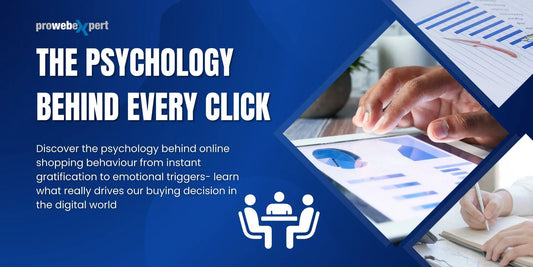
How to Increase Shopify Store Speed for Better Conversion
Share
In the rapid-fire digital landscape of today, speed holds immense importance, particularly in the realm of e-commerce. Shoppers today anticipate a quick and fluid shopping experience. A sluggish Shopify store can lead not only to lost sales but also to potential harm to your brand's image. In this article, we will discuss the significance of speed for your Shopify store, ways to develop a high-performing Shopify store without depending on bulky apps or themes, and practical strategies to enhance your store for improved conversions.
What is Shopify, and Why is it Popular?
Shopify ranks among the most well-known e-commerce platforms globally, equipping businesses with the necessary tools to effortlessly create, customize, and manage online shops. It is easy to use, scalable, and offers a wide range of themes and plugins to boost store capabilities. Shopify shops are popular due to their user-friendliness and adaptability, making them an ideal option for entrepreneurs aiming to expand their online visibility.
However, possessing a feature-rich Shopify store alone is insufficient. The speed of your store is a crucial factor that influences its overall success.
How to Build a Fast and High-Performing Shopify Store Without Heavy Apps or Themes
Establishing a high-speed Shopify store necessitates careful planning and optimization. Here are the steps to accomplish this:
Select a Lightweight Theme
Shopify provides a range of themes, but some may contain excessive features that can hinder your store's performance. Choose lightweight themes that are well-structured and optimized for speed, such as Debut, Dawn, or other minimalist options available in the Shopify Theme Store. A professional Shopify Theme Developer can help you customize lightweight themes to achieve maximum speed.
Minimize the Use of Resource-Intensive Apps
Numerous Shopify applications execute scripts that can adversely affect your website's speed. Assess and remove any apps that are not essential or that significantly slow down loading times. Instead, consider applications that offer multiple functionalities or utilize external tools that do not add code to your site. Consulting a Shopify Expert can help you identify and replace resource-heavy apps effectively.
Optimize Images and Media Files
Images and videos are significant factors contributing to slow website performance. Compress your images without sacrificing quality by using tools like TinyPNG or the image optimization features provided by Shopify. Employ modern file formats such as WebP to enhance performance.
Implement Lazy Loading
Lazy loading allows images to load only when they are visible to the user, which can greatly decrease the initial loading time of the page.
Avoid Excessive Custom Code
Although custom code can improve the visual appeal of your store, an overabundance can lead to slower performance. Maintain clean and efficient code, and eliminate any unused scripts or CSS. Collaborate with a Shopify Theme Developer to ensure your store’s code is optimized.
Utilize a Dependable Hosting Solution
While Shopify’s integrated hosting is robust, it is essential to ensure that your store’s servers are optimized for managing high traffic and substantial data efficiently.
Why Speed Matters for Shopify Stores
Speed plays a crucial role in the effectiveness of any online retail business. Here’s why:
Enhanced Customer Experience
A quicker online store offers a smooth shopping journey, motivating customers to explore additional products and finalize their transactions.
Increased Conversion Rates
Research indicates that a mere one-second lag in page loading can lower conversion rates by 7%. Speed has a direct influence on your earnings.
Improved SEO Performance
Google favors websites that load quickly, so enhancing the speed of your Shopify store can boost your search engine rankings and attract more organic traffic.
Lower Bounce Rates
Visitors are more inclined to abandon a site that has slow loading times. A quicker store retains customers' interest and lowers bounce rates.
Actionable Tips to Improve Your Shopify Store Speed
Here are some practical tips to optimize your store for maximum performance:
Optimize JavaScript and CSS Files
Apply minification tools to decrease the size of your website’s code.
Eliminate Unused Applications
Perform regular assessments and uninstall any applications that you no longer utilize.
Leverage Shopify’s Native Capabilities
Make use of Shopify’s built-in features for functionality instead of depending on external applications.
Activate a Content Delivery Network (CDN)
Shopify's integrated CDN guarantees that your site loads swiftly for users across the globe by serving content from the closest server.
Improve Font Usage
Opt for system fonts or web-safe fonts to minimize loading times.
Track Site Performance
Utilize resources like Google PageSpeed Insights or GTmetrix to evaluate your store’s performance and pinpoint areas that need enhancement.
Maintain a Clutter-Free Homepage
Minimize the use of sliders, banners, and highlighted products on your homepage to improve loading speed.
Frequently Refresh Your Store
Make sure to keep your themes, applications, and Shopify platform updated to the most recent versions for the best performance.
Conclusion
A quick Shopify store is not merely a luxury; it’s an essential requirement in today’s competitive e-commerce environment. By opting for lightweight themes, reducing the use of resource-heavy apps, and implementing the tips outlined above, you can greatly enhance your store’s speed and conversion rates. Keep in mind that every second is crucial in e-commerce, so prioritize optimizing your Shopify store now to maintain an edge over your competitors.
If you’re seeking professional support or a Shopify Expert to develop or enhance a high-performing Shopify store, Prowebexpert is ready to assist. Our team specializes in creating fast, effective, and conversion-driven Shopify stores customized to meet your business needs. Get in touch with us today to find out more!




